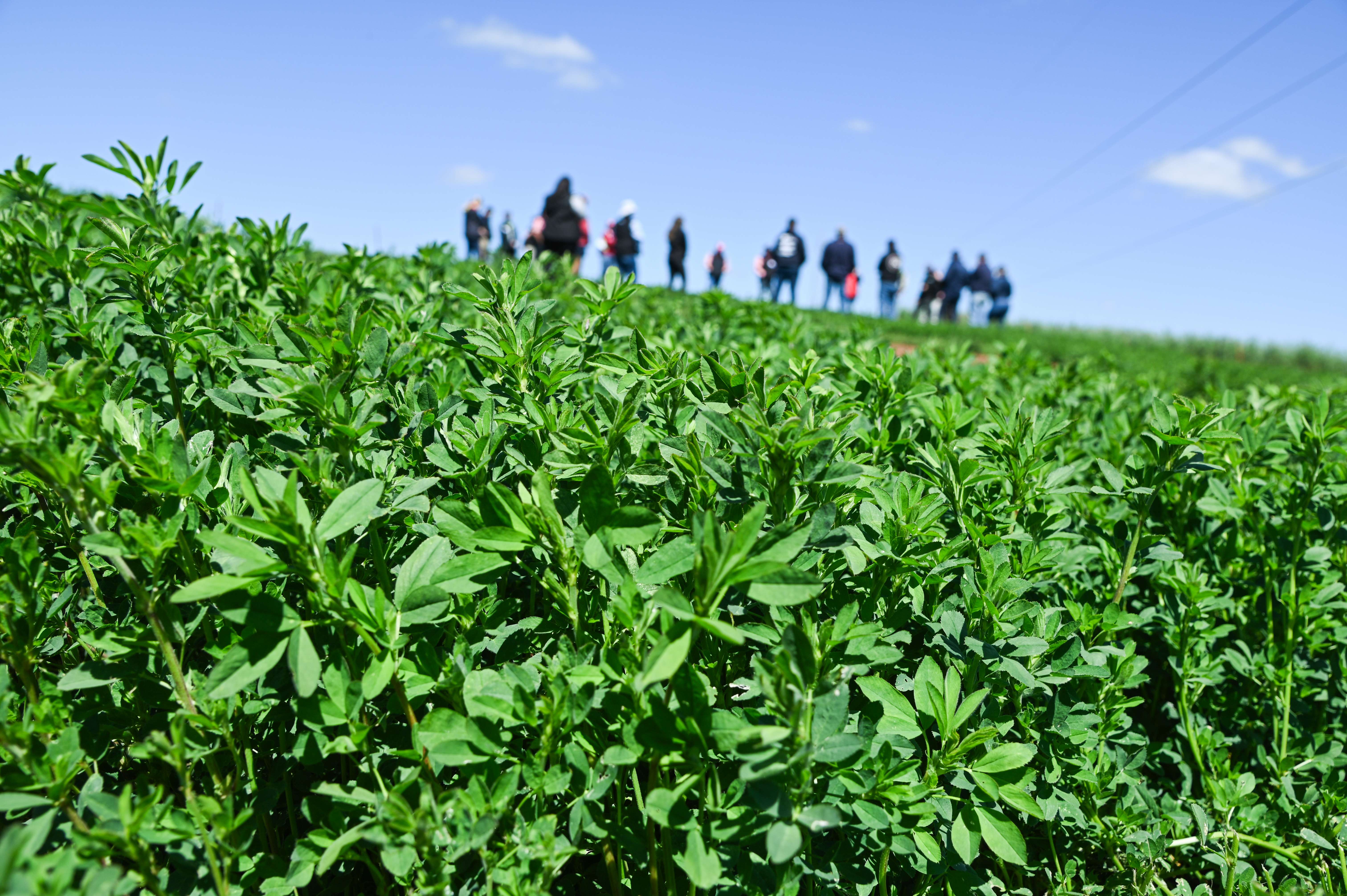Farmers across the northern NSW region are encouraged to enter the hay market by harnessing unused farmland and diverse seeds.
Following erratic wet and dry seasons, livestock farmers in particular can find efficiencies both in their paddocks and in which crop they are growing.
DLF Seeds sales agronomist Paul Sipple says many farmers don’t realise it, but recent generations of hay seeds with lucerne deliver outstanding performance and quality for hay growing, not just grazing.
“This is particularly exciting if you’ve downsized and have underutilised farm space – now is the time to get ahead of the upcoming market season for hay,” Paul says.
“Normally it might be overwhelming to choose between a summer or winter-active variety, or how to play the dormant season depending on quality versus yield,” he says.
“Nowadays, with products such as Stamina GT5, Warrego GT6 and Torrens GT8, you get the right blend of qualities to take advantage of.”
For Kim Sizer, a hay grower based in Tamworth, it is a struggle to find a balance in lucerne variety to support her hay-focused operation.
Kim supplies both horse and cattle markets, which have significantly different demands in the type of hay required.
“I’ve tried everything from very summer-active to highly winter-active varieties,” Kim explains.
“The summer-actives grew quickly and gave yield, but the quality wasn’t there for the horse market,” she says.
“The winter-actives had excellent quality but didn’t give the consistency I needed.”
In her case, the sweet spot for the ideal variety is DLF Seeds’ Stamina GT5.
“The right seed will provide the compromise between quality and yield,” Kim adds.
“We still get winter growth while keeping the prime quality horse buyers expect.”
Part of Paul’s work sees him travelling around north-west NSW and the Hunter Valley, working with hay producers from irrigated flats to broadacre country, helping them get the most out of their lucerne.
Paul’s advice for growers is simple: align cutting cycles with the variety’s dormancy.
Both Paul and Kim agree leaf retention is the central ingredient which makes lucerne in hay so valuable.
“I’m ruthless with lucerne stands,” Kim says.
“We rotate every three years as the cost of replanting is minimal compared to the return from a productive stand,” she says.
“GT5 regrows quickly, holds quality and has strong disease tolerance, even in challenging conditions.
“Lucerne is incredibly resilient, shown by DLF Seeds varieties,” Kim says.
“It can be pushed, waterlogged or exposed to disease and it still comes back. Matching the right variety to your system is what unlocks real quality.”




